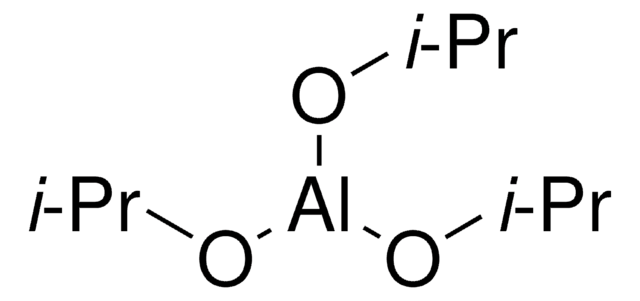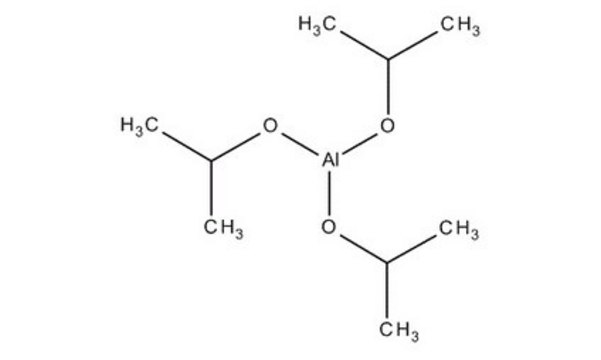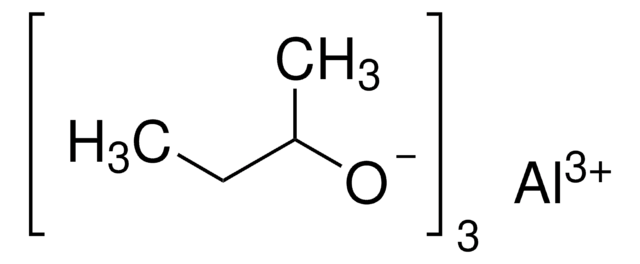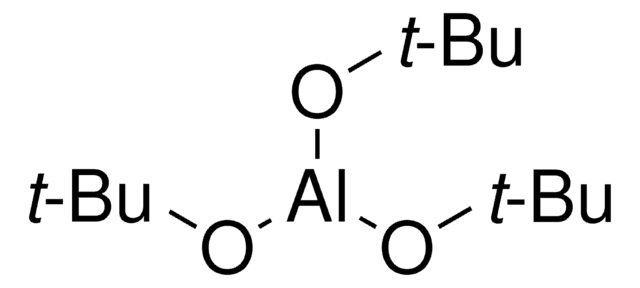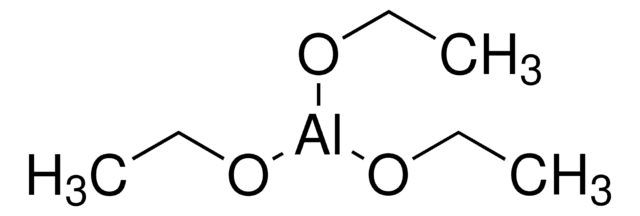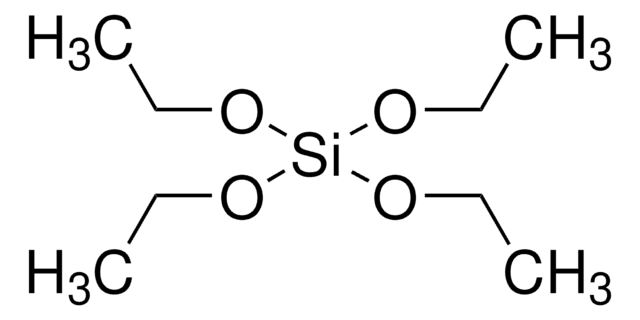220418
Aluminum isopropoxide
≥98%
Synonym(s):
AIP, Aluminum isopropylate, Aluminum triisopropoxide
About This Item
Recommended Products
Quality Level
Assay
≥98%
form
solid
reaction suitability
core: aluminum
reagent type: catalyst
mp
128-133 °C (lit.)
density
1.035 g/mL at 25 °C (lit.)
SMILES string
CC(C)O[Al](OC(C)C)OC(C)C
InChI
1S/3C3H7O.Al/c3*1-3(2)4;/h3*3H,1-2H3;/q3*-1;+3
InChI key
SMZOGRDCAXLAAR-UHFFFAOYSA-N
Looking for similar products? Visit Product Comparison Guide
Related Categories
General description
Application
- As a precursor to synthesize alumina nanoparticles and multimetallic oxides via sol-gel processing.
- As a catalyst for various organic transformations such as Meerwein–Ponndorf–Verley–Oppenauer (MPVO) reactions and ring-opening polymerization of lactides and lactones.
- As coating material to fabricate electrodes for lithium-ion batteries toenhance cycling stability and performance.
Signal Word
Danger
Hazard Statements
Precautionary Statements
Hazard Classifications
Flam. Sol. 1
Storage Class Code
4.1B - Flammable solid hazardous materials
WGK
WGK 1
Flash Point(F)
Not applicable
Flash Point(C)
Not applicable
Personal Protective Equipment
Choose from one of the most recent versions:
Already Own This Product?
Find documentation for the products that you have recently purchased in the Document Library.
Articles
The properties of many devices are limited by the intrinsic properties of the materials that compose them.
Our team of scientists has experience in all areas of research including Life Science, Material Science, Chemical Synthesis, Chromatography, Analytical and many others.
Contact Technical Service